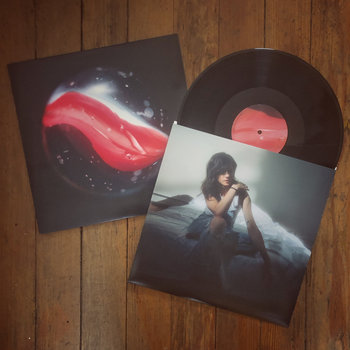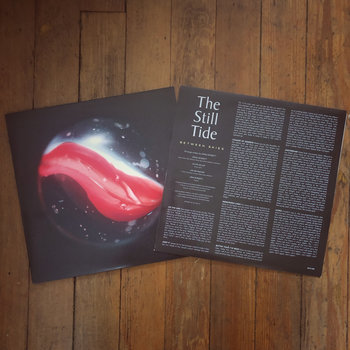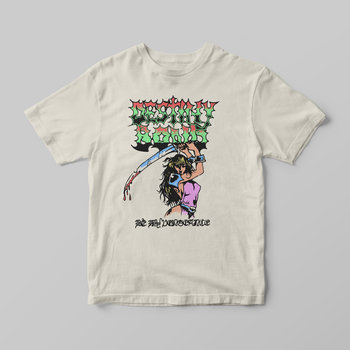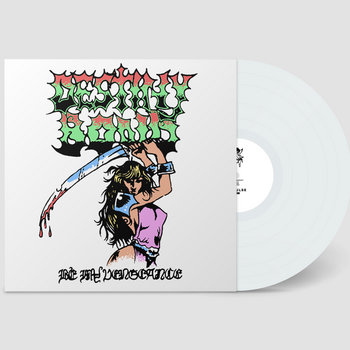
Of all the places to plant a city, you could pick far better than the center of Colorado.
Snowbound by spring blizzards, parched by summer droughts, hemmed in on one side by the Rocky Mountains, and buttressed on the other three by the Great Plains, Denver only exists where it does because some schmuck in 1858 spotted a few flecks of gold in the shallows where the South Platte River and Cherry Creek converge. The encampment that sprung up around it remained even after the watery junction was inevitably panned clean, functioning as a convenient outpost for miners en route to the nearby mountains, where silver was being hauled by the cartful out of the range’s granite guts.
To some extent, Denver’s raison d’etre remains its proximity to those mountains, although outdoorsy types have long since replaced prospectors as the target demographic. In the introduction to the 1997 architectural survey Buildings of Colorado, historian Thomas J. Noel states outright that “Colorado’s landscape dwarfs its architecture,” which is true both spiritually and physically and helps explain the city’s strangely elastic identity. Colorado’s landscape dwarfs every man-made thing ever built atop it, including and especially Denver.
It also isolates it. The closest major cities are all smaller metropolises at least eight hours away: Salt Lake City to the west, Kansas City to the east, and Albuquerque to the south. It’s 11 hours to Las Vegas, 12 to Dallas, and 14 to Chicago if you floor it. Denver is a flyover country capital turned hip only relatively recently, complete with the stereotypical housing crisis and hastily constructed apartment buildings and microbreweries painted various shades of gray and beige.
Many such buildings now line Brighton Boulevard, the two-way thoroughfare that curves gently northeast out of downtown along the railroad tracks. For decades it was a no man’s land to developers, dotted instead with warehouses, auto body shops, a Pepsi bottling plant, and, at the corner of its intersection with 36th Street, Rhinoceropolis, the DIY venue that put Denver underground music on the map. Rhinoceropolis (“Rhino” in casual conversation) and its adjacent venues Glob and Club Scum formed the three-headed, long-standing-against-all-odds heart of Denver DIY, hosting the likes of Grimes, Lightning Bolt, and Future Islands during its 11-year tenure. Several days after the Ghost Ship fire killed 36 people in Oakland in late 2016, panicked city officials sent in the fire department who turned its residents out in below-freezing temperatures. And that was that.
All subsequent discussions of Denver underground music feel inextricably bound to the “post-Rhino” distinction. Brighton Boulevard itself is post-Rhino, with its multi-use commercial spaces and surplus of tacky murals and realty-friendly rechristening as RiNo, short for “River North.” The flat-roofed, brown-brick building and adjacent gray house home to Rhino, Glob, and Club Scum still stand. In the intervening years there have been several code-compliant attempts at resurrection, some more successful than others, and all cheered on by the community on account of (at minimum) not having resulted in demolition.
Late last year the building was rented by a local arts collective and remade into Squirm Gallery. The back room is now a workshop with a risograph and a kiln; the front room remains an exhibition and performance space that recently hosted a solo show of paintings by American Culture guitarist Michael Stein followed by a group show of textile-based work called “On The Nature of Here.” At the well-attended opening of the latter, a younger crowd still capable of wearing fishnets and military boots in January weather ambled around works suspended from the walls and the ceiling, sipping Franzia and poking at tiramisu on paper plates.
Collective members Cyrena Rosati and Ruby Sumners were both in attendance, manning the door and making rounds. I’d interviewed both of them earlier that same week. The conversation began naturally, inevitably, with their personal recollections of pre-closure Rhinoceropolis. “I used to stand outside for 20 minutes trying to get the nerve to walk in,” Sumners told me. “I thought this was the coolest thing ever.”
I did too. Roughly a decade ago I was the one just outside the front door, shifting my weight from foot to foot while working up the nerve to go inside and watch Peach Kelli Pop perform. A couple weeks later the cute guy I met at a Ty Segall show invited me to see his band play there. Somewhere there’s a photo of me from that night, glistening with sweat and grinning from ear to ear, an entire sheet of mylar (his band’s trademark set decoration) bursting out of the front of my half-zipped jacket.
That was it for me. I spent the following summers with the kind of god complex that being barely an adult and on fire begets, armed only with a disposable camera and the email address of the music editor at Westword, the local alt-weekly which inexplicably published whatever I managed to write between hangovers. At the time I did not think of Denver as isolated. I thought it was the bona fide center of the underground universe.
And in retrospect, it was booming. Or it certainly felt that way on nights split between Rhino and Juice Church, the disused Baptist church where everyone crammed into a low-ceilinged fire-hazard-of-a-basement for shows. Further west in Capitol Hill there was Deer Pile, with the as-advertised mural of several deers in a pile. Further south was Back:Space, a large one-room space with a mural of a fanged jackrabbit running so fast its cranium had detached completely. At one point someone set up a giant seesaw in the parking lot; The Corner Girls drummer Madi Pietruszka turned 21 on top of it while everyone sang happy birthday below.
On the opposite side of I-25, which unevenly bisects Denver’s western neighborhoods from its eastern and central districts, sat Seventh Circle Music Collective, an all-ages spot largely the domain of hardcore and punk bands. If Denver ever had a counterpart to 924 Gilman, it was this. Further south in the Barnum neighborhood there was Orange Grove, a rented house with an enclosed front porch and a reasonably sized basement, which by house show standards constitutes a veritable paradise. On top of it all, there was ample overlap with smaller bar venues around town that always needed local openers or weeknight shows: Larimer Lounge, Lost Lake, the Meadowlark, and the Hi-Dive among them.
Almost all of those DIY venues are now long gone. Juice Church was raided by the city amidst the Ghost Ship fallout. The landlord balked at the cost of compliance repairs so it sat empty until it was torn down. Ex-Juice Church resident Patrick Callnin subsequently started NuDe City Relief Center—“NuDe” was a tongue-in-cheek portmanteau of “Nu Denver,” slang for the city’s uber-gentrified areas—in the back rooms of an old Masonic lodge. (The local Freemason chapter still used the adjacent rooms, and its geriatric members once barged in on band practice in full wizard-esque regalia demanding an explanation for that racket.)
NuDe City Relief Center wasn’t raided; instead it met its end via the Covid-19 lockdown. Diners played its final show. By the time lockdown lifted, restarting the space was out of the question. “It was very obvious that it wouldn’t have worked,” Callnin said, citing the influx of new neighbors who’d moved into the apartment building across the street in the interim. “It went from that one dude living there chilling on his balcony smoking weed to people barbecuing on their balconies every day.” Essentially, the noise complaints were filed before the music had even begun.
I’ve known Callnin for years, and towards the end of our conversation we can’t resist reminiscing just a little. “I don’t know if I would say the Juice Church era was the glory days or the golden years or whatever, but there were four shows a night you could go to. Pop around. Walk from Juice Church to Rhino. Telling young people about what 2016 looked like, they’re just mind-blown,” he says. I half-jokingly point out how the name “NuDe City Relief Center” has been rendered obsolete: “Nu Denver is just Denver now.” He nods. We say goodbye. I get into my car and drive away feeling positively funereal.
It is exactly zero degrees Fahrenheit. Every surface in town is slick with ice, but particularly, it would seem, the sidewalk outside of the Hi-Dive, a longtime scene hub and one of the last bar venues in the city not owned by either AEG or LiveNation. Inside the Hi-Dive it is not considerably warmer, despite the decent-sized crowd. Anna Morsett is onstage with her dream pop band The Still Tide, and she’s offering the audience a sweater. Yes, she’s serious. When no one immediately takes her up on the offer, she drapes it over a monitor so anyone who changes their mind can grab it.




Vinyl LP


By now Morsett is a bit of a Denver scene veteran, having relocated from Brooklyn in 2013. She has been in the studio working on a new record, delayed first on account of the pandemic, and then on account of the sudden uptick in post-pandemic work as a guitar tech for Feist and Alvvays. Neither The Still Tide nor her other band, Bluebook, are DIY bands, nor do they claim to be. Neither is Wave Decay, the shoegaze-y four-piece I catch at the Hi-Dive a few marginally warmer nights later. But all of these bands are part of an increasingly large cohort within the Denver scene that has coalesced around (or been funneled into) the Hi-Dive.
“One thing I’ve noticed is that a lot of DIY-oriented bands shifted to embracing midsize venue shows,” Callnin tells me. By “midsize venue shows,” he means primarily shows at the Hi-Dive. Derek Brannon, who plays guitar in Cherished, feels the same: “There used to also be a club scene that a lot of DIY bands would play at, and that has mostly disappeared. You can play at places like Lost Lake or Larimer Lounge, but most of that is just happening at the Hi-Dive now.” Wave Decay frontman Jeff Deakyne calls Hi-Dive “so standalone” now that “LiveNation has eaten up Lost Lake and all these cool independent venues that were super cool to play.”
“It is kind of a unique venue,” says Morsett. But the Hi-Dive is unique on account of its non-corporate ownership and local-act-centric booking, not for its standard-issue bar-venue feng shui, right down to the black walls and ramshackle toilets. “They’ve definitely cornered the market on being the place to play nowadays,” says Matt Loui, the frontman for Colfax Speed Queen, a band I’ve heard winkingly described as Hi-Dive’s house band more than once. “But you also can’t play Hi-Dive every single time.”
Indeed not. Any band on a show booked by Adam Croft, who founded the local and not-exclusively-hardcore label Convulse Records in 2018, won’t play it at all. Lately Croft is committed to booking shows exclusively at all-ages venues. He also has the rosiest perspective on the present state of Denver music than anyone I’ve met.




T-Shirt/Shirt, Vinyl LP


Croft’s personal optimism is not unfounded. Besides running Convulse, increasingly the hardcore label de rigueur, he also drums in Destiny Bond, a “band to watch” that’s “shaping” Denver hardcore and getting well-reviewed on Pitchfork. His days of persuading touring bands that touring through Denver was worth the price of gas—“A paragraph about, ‘Hey, Denver is great right now, please believe me,’” he recalls—are over. “Pretty legendary hardcore bands will reply to my emails and be like, ‘We respect Convulse so much. We want to play Denver specifically. We see what’s happening. It’s been on our list.’ That’s a huge shift from when I started going to shows.”
Denver’s hardcore resurgence aligns with the one happening nationally, but the local scene’s relative isolation, which Croft characterizes as a “tradeoff,” also makes it distinct. “Part of what makes Denver cool and why we have so many great bands right now in hardcore and punk is that it’s isolated just enough that kids do their own thing. They try something a little weirder or a little different or maybe they try something that’s not necessarily what’s huge nationally at that moment,” he says. “The other reason it’s so great is that we have all these DIY venues where kids can suck ass at playing music and get really good.”
Ok, fine, by “all these DIY venues,” he means two in particular. But in his defense they’re two great ones: Seventh Circle Music Collective, that old hardcore faithful, and D3 Arts, a multi-purpose community space run by the Jaramillo family in Westwood, the working class Latino neighborhood situated against Denver’s westernmost boundary. In addition to art openings and DIY shows, D3 hosts skateboarding nights, kiki ballroom classes, and weekly 12-Step meetings.
When I arrive at the candy pink building that Google Maps swears is D3 I knock on the door and peer through the windows and see no one and can’t figure out how to get in. Turns out the main arts space with the stage-slash-gallery and screenprinting studio is next door. Lala Jaramillo is right inside, busily preparing for an art opening the next day featuring local muralists. I marvel at her hoop earrings the size of tea saucers as I follow her into the stage area, behind which she and her father, Santiago Jaramillo, have painted intricate depictions of Aztec deities.
According to Lala, Santiago was a “little punk skater fuckup” in the ‘80s, but now he’s a celebrated muralist and the head of D3, which he founded 12 years ago as a place “to be sober and do art.” There have been some hitches, including when they had to fend off closure in August 2022 after the fire department showed up on an anonymous tip about “illegal raves and pyrotechnics.” One commercially licensed fire alarm later, D3 is back up and running, and Lala is running the show(s). As a teenager she hung out at Seventh Circle, and she has modeled D3 along punk core values of all-ages community since taking the reins in 2022. 300 people fit in D3’s main room, where she predominantly books hardcore, noise, and electronic acts.
There’s no longer a major shortage of those, with Denver a burgeoning destination for bands in a way it just wasn’t even a few years ago. But Denver also remains firmly and inconveniently where it is. There’s not an overwhelming amount of creative exchange between Denver and anywhere else because—and I say this at the risk of pissing off the entire population of Laramie, Wyoming—there is nowhere else around. “We’re so centralized. On the East Coast, they all fluctuate. Philly and New York, they’re always trading off people and styles,” says Lala. “But out here it’s more community-based. Everybody knows each other which is really cool. Denver is really unique. It’s like cowboy hardcore.”
“You’ve gotta know, it’s real freaks out here,” Blake Sheumaker, one-half of the digital hardcore duo Water on the Thirsty Ground, tells me. Julia Bull, his bandmate, bursts out laughing. Sheumaker is genuinely funny; earlier in our conversation, he tells me that he will occasionally refer to the duo’s music as bedroom pop “because we started making it in a bedroom and it’s popular.” The music is, as a matter of fact, super abrasive post-internet-hyperpop-meets-noise—or something of that nature. One must assume the “real freaks” designation applies to him and Bull. They tend to play on mixed bills because, realistically, how else are you going to book them?


The first of Water on a Thirsty Ground’s mixed bills was a show organized by a collective called Faith Changes the World, who are very accommodating when I arrive at their two-story house right by a famous old-timey restaurant known for its fried bull testicles and wall-to-wall taxidermy decor. Their block is lined with old houses across from a row of much newer apartments built in an architectural style best described as neo-rectangularist. If this were a metaphor about gentrification in a creative writing class, the critique would be a bloodbath. Alas, it’s real life.
I meet 11 of the 13 collective members in their living room. They range in age from early 20s to mid-30s, some Denver born-and-raised, some fairly recent arrivals. There’s Jame Doa, a musician who performs as INBIO. Thre (pronounced “three”) is a musician and videographer. Hannah makes music under the name Sybil and VJs. She’s in a group called Memory Saw with Cameron, who also VJs and does 3D art and fabrication. Blossom is a graphic designer, video editor, and sometimes photographer. Onica makes “experimental destructive reggaetón” under the moniker Uzâ a’amo. View is a musician and a producer who moved to Denver with Meya, who DJs under the name SPOKE2GOD. Angela is a visual artist who hasn’t yet decided on a performance name for the “industrial weird techno sounds” she’s currently making. Silo does gesture performance. Jon makes installations. Absent are Moth and Tommy, who make music together as Vex Dread.
The name “Faith Changes The World” came from an inspirational quote on a Burger King marquee spotted by Silo and sent to the group chat on the night of the super flower blood moon in 2022. “At first it was a gag because it’s long and not something. It’s a statement, not like a name,” says Jame. “But then it has become an affirmation where people after experiencing things have been like, ‘Faith changes the world!’”
Much of what Faith Changes The World is trying to create comes down to that slippery verb: make people experience things. They find an empty building, convince whomever it takes to let them have it for a night, haul in an entire sound system, fill it with installations, book DJs, organize corresponding performance art sets, and then break it all down immediately after. They’ve relied on spaces like Squirm Gallery to act as venues before, but they’ve also managed to run nights inside an old cheese culture factory (which they decorated with spray foam stalactites and stalagmites) and a historic school building just before it was converted into office space.
No one feels Denver’s strange elasticity, relative isolation, and odd vacuousness more keenly. Silo characterizes the city as “vibe-less.” Hannah calls it “a void.” Everyone murmurs in agreement when Blossom compares walking around Denver to being inside the artificial world of The Truman Show.
There is an upside to this. As Meya sees it, Denver’s literal and figurative isolation frees the collective to work without the limitations of “a pre-existing culture industry that already has a set idea of what is avant-garde and what is experimental and what is underground.” In the eyes of the collective, Denver is the antithesis of any electronic music city that could be accused of having a sound.


With no expectations or boundaries to speak of, the collective has started releasing their individual musical projects on their own label Lithocene, which they repeatedly describe as a “world-building project.” Among its releases you’ll find a combination of sound collages and deconstructed club tracks and spiderweb-thin ambient tagged with made-up genre labels like “music+” and “car crash music.” Its influences are digital, not regional.
“I don’t think anything that we’ve done has been any kind of rebellion against some old thing that existed here,” says Jame. “It’s mainly just been a rebellion against the absence of what is here.”
A few weeks later I’m sitting in a classroom in Berlin, half-focusing on a German lesson. The teacher asks us what makes Berlin different from whatever city we’re from to practice a grammatical form. The New Yorker sitting to my left pipes up right away. When it’s my turn, I find myself at a loss for words, and not because I’m missing the vocabulary auf Deutsch. I briefly think of something Thre said: “No one we know is like, ‘Oh, I’m a Denverite!’”
That same night in Denver, one of the fastest-rising bands in town sells out the Bluebird, a 550-capacity theater owned by AEG. The band is called Rootbeer Richie and The Reveille. “Swamp pop” is their whole schtick, and the show is a New Orleans-style Mardi Gras celebration. They’re friends, and I’m genuinely sorry to miss it. Nevertheless it occurs to me as I flip through clips on people’s Instagram stories that not even Rootbeer Richardson, despite being the frontman of one of the few local bands that can sell out a room that big, is out there proudly declaring, “I’m a Denverite!” I know because I’ve seen the neck tattoo he had done just days after moving to Denver from New Orleans. It reads “Louisiana Trash.”


That’s not to imply that Richardson dislikes Denver. He loves it. He calls it a “weird utopia of weather” because it lacks Louisiana’s humidity, hurricanes, and mosquito swarms. He loves the thin air and high altitude, joking that “maybe my brain needs a little bit less oxygen or something.” He moved to the city specifically to assemble the Reveille, which is something of a scene supergroup. He mentions the Hi-Dive verbatim on “Stop, Drop, Rock N Roll” off their 2022 self-titled EP. He has been approached by fans in coffee shops and a Restoration Hardware, which he thinks is weird because he’s “just a dude.” The first time it happened he was so surprised he called his mom afterwards to tell her.
Richardson is nothing if not ambitious. If it all goes according to plan, the Reveille will be a very successful touring act based out of Denver. “Obviously I’m going to take this as far as I can, perform for as many people as possible,” he says. “But if this was the ceiling for the Reveille, I’d be OK. Being a local legend is pretty dope. There’s nothing wrong with that.”







